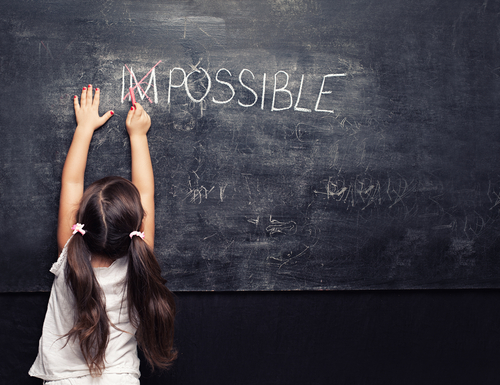


Reducing Rural Poverty in China
13 December 2022Is a Data Journalist Worth a Hundred?
13 December 2022Fighting against inequality requires questioning education systems, how they make it possible to remedy them, why they rarely succeed, or even aggravate them. This is the objective of a research project – The Role of Educational Constraints in Shaping Inequalities – led by Ghazala Azmat, researcher in the Department of Economics – which was selected by the European Research Council as part of its very selective program of ERC Grants. Presentation.
Sluggish Riding in the Social Elevator of Educational Systems
There has been a growing global commitment by policy-makers to equity in education. The introduction of a public schooling system was advocated to equalise opportunities across individuals and to allow for social mobility (1)Mann, H. 1957. “The Republic and the School: Horace Mann on the Education of Free Men, Teachers College,” Columbia University.. Today, that commitment continues as a specific target of the Sustainable Development Goals set by the United Nations in 2015 (2)Sustainable Development Goals set by the United Nations, UNESCO, 2015. However, socio-economic inequalities in education persist and there is no country in the world that can yet claim to have eliminated them (3)OECD. 2018. “Equity in Education: Breaking Down Barriers to Social Mobility,” PISA, OECD Publishing, Paris.. In recent years, a steady increase in economic inequality within countries coexists with educational inequality, making improving equity in education more relevant today than ever before.
Reducing educational inequality requires that the differences in students’ economic, or social, background do not determine different educational outcomes. Economists and scientists from other social sciences, as well as policy-makers, have long been interested in the contribution of the educational system to social mobility. However, one longstanding concern is that educational systems might not always operate as a social elevator in the presence of sorting and unequal opportunities. Worst still: they can potentially act as a divider, exacerbating inequality both in the short and longer run. The aim of the project ‘The Role of Educational Constraints in Shaping Inequalities’ is to carefully examine the educational constraints faced by individuals at a stage when they are planning their future investments in human capital.
Early Plans Can Change and Be Influenced by One’s Environment
Even at a young age, individuals are already making educational plans – for example, the length of their studies or their academic track. These plans provide them with internal consistency and a form of commitment. However, plans are changeable, in the early stages of education, and plans can be influenced. This gives public policy the scope to intervene. Early interventions that change people’s constraints can change their plans and investments in a permanent way. Given the critical role of educational attainment for later economic success and general well-being, it is key to understand the process of educational decision-making, as a means of understanding the contribution of educational choices to the emergence, development and persistence of inequality. My research project is about the impact of early interventions on educational constraints with a focus on heterogeneous effects and inequality.
An important motivation for the themes of this project stems from two recent studies on which I am currently working. They centre on the idea of human capital planning and their links to inequality in education and in the labour market. The first study focuses on the importance of educational planning and investments in adolescence (4)Azmat, G., and K. Kaufmann. 2021. “Formation of College Plans, Expected Returns and Preferences: Evidence on the Process of Adjustment to a Large Shock,” unpublished manuscript.. The second, on the importance of career planning and setting goals on professional success(5)Azmat, G., Cuñat, V. and E. Henry. 2022. “Gender Promotion Gaps: Career Aspirations and Workplace Discrimination,” unpublished manuscript.. These studies highlight two key results: first, that early planning matters for future outcomes; and second, that, even though by definition, early plans are somewhat sticky, they can also change and be influenced by (changes in) the environment.
In an article written with Katja Kaufmann, we causally estimate the effect of a large macro shock as exemplified by the German Reunification on the university plans among adolescents in East Germany. An important takeaway from the study is that it shows that adolescents do make university plans and shape their human capital investments accordingly. For cohorts in the process of making plans (aged 13), the change in environment has an enormous impact, while those at a slightly later stage (aged 15), this is much less the case, this even though the change in opportunities is almost equivalent for both cohorts. Importantly, our study also highlights that student skills and beliefs are malleable, especially in childhood or adolescence, and can be fostered through educational interventions.
When Negative Environments Constrain Aspirations
In the context of gender, while gender gaps in educational attainments have closed in recent years (or even reversed, favouring girls), there are growing concerns about other educational dimensions. We see sizable differences in the payoff related to educational or career choices and, notably, few women in top positions.
In a work that I have conducted with two colleagues (6)Azmat, G., Cuñat, V. and E. Henry. 2022. “Gender Promotion Gaps: Career Aspirations and Workplace Discrimination,” unpublished manuscript. using a representative survey of U.S. lawyers, we document a sizable gender gap in the promotion to partner among lawyers. We show that 50% of this gap is explained by a gender gap in the early aspirations to become a law firm partner. What is striking in this study is that, on a large battery of observable characteristics, there is no gender difference – most importantly, there is no gender difference in terms of prior educational attainment or educational performance. Similarly, there is no difference in professional goals at the entry let. Yet, only after a short time in the workplace, professional goals and investment differ tremendously by gender. What is also striking, as in Azmat and Kaufmann (7)Azmat, G., and K. Kaufmann. 2021. “Formation of College Plans, Expected Returns and Preferences: Evidence on the Process of Adjustment to a Large Shock,” unpublished manuscript., is that differences in the (workplace) environment, shape goals. For instance, in this case, negative (discriminatory) experiences, which are more prevalent for female lawyers than males, lead to lower career aspirations and associated investments on-the-job, and, in turn to lower the likelihood of promotion.
Measuring the Barriers to Equal Learning and Opportunities
The project will focus on four types of educational constraints: technological barriers; social diversity at school; access to role models; and internal (psychological) constraints. The project will seek to understand, and quantify, the role of the different barriers in leading to unequal learning and opportunities and the effects of easing the constraints. Different parts of the project target specific questions that will help construct an overall picture. The project will seek to understand, and quantify, the role of the different barriers in leading to unequal learning and opportunities and the effects of easing the constraints. Specifically asking: Can the easing of technological constraints reduce learning inequality? What role does ICT access and training play for distance learning? Does differential social exposure within the classroom impact student outcomes? Can role models help an individual reach their goal? How important are psychological (or socio-emotional) barriers for achievement? This will be done by combining field interventions, experiments, and rich econometric and analytical tools to analyse big datasets and to causally estimate the impact of the components that drive the adjustment in educational plans, and, ultimately, how these factors into later educational outcomes. All projects will aim to capture the short – and long-run impacts.
Ghazala Azmat is a Full Professor at the Sciences Po Department of Economics. Her main research interests are in applied and empirical economics, with a particular focus on the economics of education, labour economics.
Notes
| ↑1 | Mann, H. 1957. “The Republic and the School: Horace Mann on the Education of Free Men, Teachers College,” Columbia University. |
|---|---|
| ↑2 | Sustainable Development Goals set by the United Nations, UNESCO, 2015 |
| ↑3 | OECD. 2018. “Equity in Education: Breaking Down Barriers to Social Mobility,” PISA, OECD Publishing, Paris. |
| ↑4, ↑7 | Azmat, G., and K. Kaufmann. 2021. “Formation of College Plans, Expected Returns and Preferences: Evidence on the Process of Adjustment to a Large Shock,” unpublished manuscript. |
| ↑5, ↑6 | Azmat, G., Cuñat, V. and E. Henry. 2022. “Gender Promotion Gaps: Career Aspirations and Workplace Discrimination,” unpublished manuscript. |




